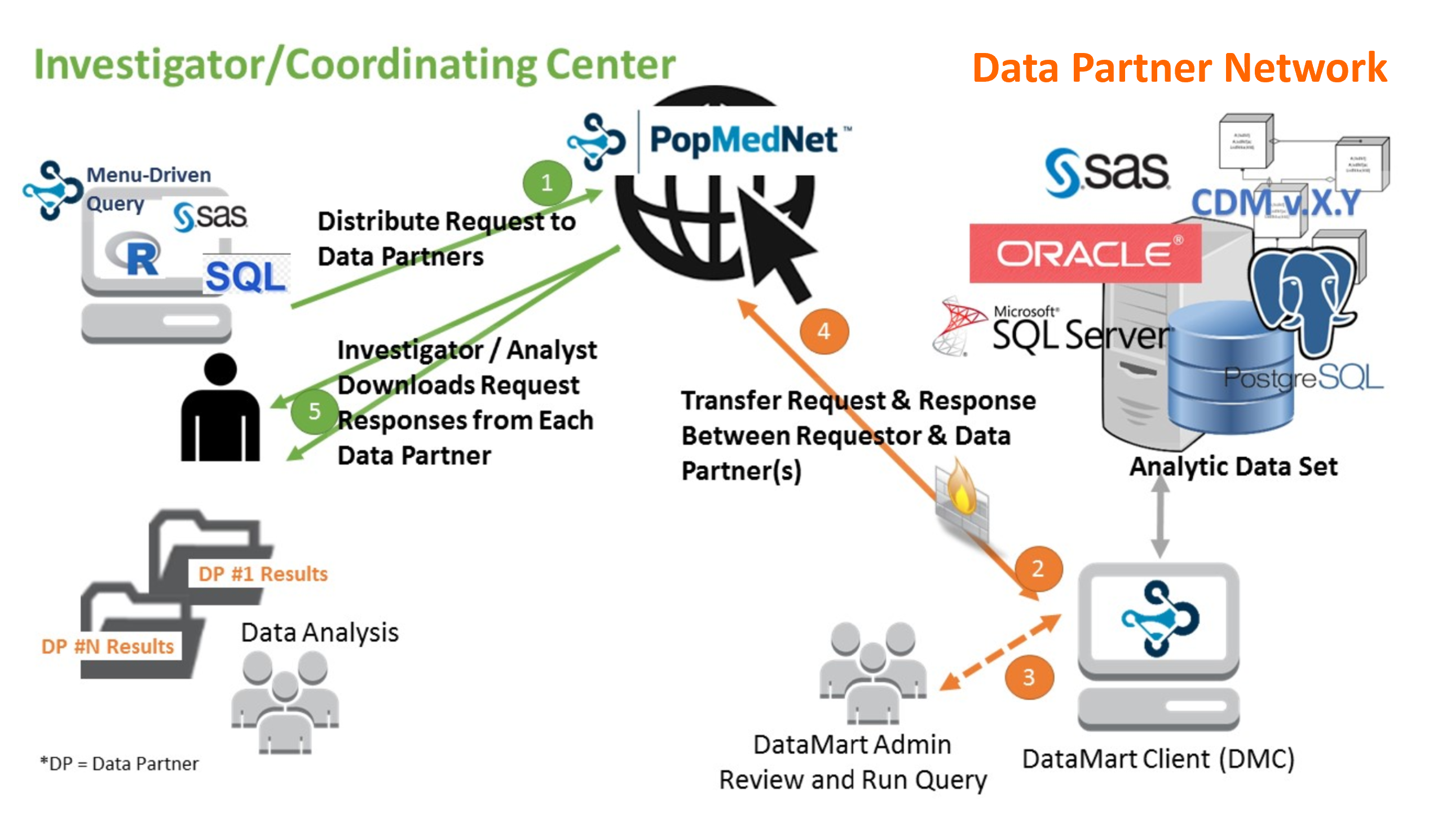PopMedNet Home | How it Works | Complementary Tools | FAQs | Contact Us
PopMedNet™ is an open-source application used to facilitate multi-site health data networks. It uses a distributed network design that enables data holders to retain full control of their data. Investigators send questions to data holders for review and response. PopMedNet eliminates the need for assembling patient records in a centralized repository, thus preserving patient privacy and confidentiality.
PopMedNet is made up of three primary components:
- PopMedNet Query Tool: The web-based application from which queries are distributed.
- DataMart Client: A locally installed application from which queries are executed and responses are sent back to the query portal.
- Web Service API: API used to implement all application logic that processes requests against a network. The API is also used for integrations with PMN-allied services and applications.
How does PopMedNet work?
- Request: Investigators distribute data requests constructed in the point and click
web interface - Review: Data Partners receive and review requests in their DataMart Client
- Respond: Data partners execute the requests against their local data and upload results
- Download: Investigators access results in the query tool

PopMedNet Technology Stack
PopMedNet uses an n-tier architecture with separate end-user, services, and assets web applications.
PMN version 2021.1 and Above
Website Portal
MVVM Client Stack
- Microsoft Windows Operating System
- .NET 4.8
- Data Transfer Objects
- ASP.Net MVC 5
- ASP Web API formalization
- Durandal
- Knockout for object bindings
- Kendo UI for controls; buttons, sortable / searchable grids, tabbed panels
- Bootstrap UI framework for interoperability
- Typescript for strongly typed JavaScript
- HTML 5 / CSS3
- Microsoft SQL Server
Service API
- .NET 4.8 with ASP.Net Web API 2.2 & JQuery
- Microsoft SQL Server with LINQ
- TLS 1.2
DataMart Client Application
Allow incremental changes to common data models. Automatic SQL generation for primary DBMS vendors.
- .NET 4.8
- Windows Forms
- LINQ and SQL in various dialects
- Microsoft SQL 2018 Server
- Oracle 12c and 18c DBMS
- PostgreSQL 9.5 and 9.6 DBMS
- Introduce a standardized sand-boxed data adapter model
- New adapters based on Entity Framework
- Adapters dynamically downloaded
- Adapters versioned with side-by-side execution
Continuous Build Environment
- Azure DevOps and Git
- GitHub
Quality Assurance Tools
- Atlassian’s JIRA Software
- Atlassian’s Confluence Software
- Playwright